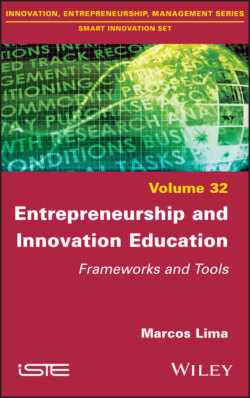Читать книгу Entrepreneurship and Innovation Education - Marcos Lima - Страница 14
I.3. Who is this book for?
ОглавлениеThis guide targets entrepreneurship and innovation teachers looking for proven tools to facilitate the process of new venture creation according to the pedagogical principles of Collaborative Interactivity, enriched with digital support systems and project-based learning. At the end of each chapter, professors will find a summary of teaching and learning strategies adapted to each stage of the entrepreneurship and innovation (E&I) process, with examples of best practices extracted either from my own experience or that of other E&I teachers.
The book was also conceived for students of E&I courses interested in hands-on tools for developing new businesses. The text presents over 50 frameworks as it follows the stages of new venture creation: how to go from a vague idea to a clearer vision, how to transform the vision into a business plan and then how to transform this static plan into a testable, dynamic business model strategy. They will then learn how to apply Design Thinking principles to prototype their products and services and how to test and improve them before they start their businesses. We conclude by presenting the challenges of keeping the business innovative as it scales up.
Finally, this guide can also be used by “intrapreneurs”. This type of innovative entrepreneur consists, according to Schumpeter (1982), of managers who have the will and the power to perform the “entrepreneurial function” in companies or startups they do not own. Indeed, the tools and methods described here can be applied both to new venture creation and to mature business development. By better understanding the unmet needs of existing or new customers, intrapreneurs can use this guide to fulfill them with more innovative products, services and business models.
Maybe we should also alert readers to what this book is not. It is not a detailed manual on how to use the dozens of frameworks presented here. It is meant as a summary overview of the “forest” of tools available to teachers and students of entrepreneurship and innovation, not a guide on how to apply them in detail. The internet (as well as our own references at the end of the book) contains several resources to go deeper on each tool, depending on the reader’s interests and needs. Thus, the text was kept deliberately short to make the reader aware of the different approaches to developing visionary products and services, and how to learn and teach them, without getting lost in the details. Once the contours of the “forest” are well understood from this “helicopter perspective”, it is much easier to descend onto the “canopy” and explore specific “trees”.
